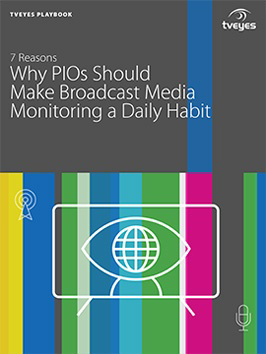As a public information officer (PIO), you play a special role in our communities. You contribute to society’s welfare with community and advocacy programs and maintain order by providing the public with accurate, timely and consistent information. Your work is no small task. In a large emergency, for example, you may be required to answer hundreds of media requests in a highly fluid situation, and rapidly shifting needs and facts make achieving this goal quite challenging.
On a daily basis, however, your job as PIO remains challenging and complex. The public expects prompt answers and full transparency from the institutions they rely upon for health, safety, and welfare. You’re not only the lead communicator and face of the organization, but also the go-to resource for any time-sensitive information. Thus, even on a “normal” day, there’s likely to be little time to spare, making time-saving tools a must-have for PIOs.
PIOs represent a wide array of government and educational institutions, including police and fire departments, school districts, hospitals, universities, and municipal, city, county and state governments. In this role, you’re most visible during a crisis, but day-to-day responsibilities include strengthening relationships with the community, advocating for the organization’s mission and vision, and ensuring the accuracy and consistency of the information you provide to the media and the public.
In larger organizations, such as a sheriff’s department, this may also include providing media training to other PIOs and stakeholders.
Working closely with the media is a significant part of the job. Broadcast news is particularly influential, especially at the local level, because people still prefer to get their news from television. According to Pew Research Center, 57 percent of U.S. adults say they often watch television news, and when asked which platform they prefer, broadcast is their top choice, followed by the web. For this reason, broadcast media monitoring is a necessary component of an effective public information program, indispensable for helping you achieve your goal of providing the public with accurate, timely and consistent information.
The focus on community relations highlights the importance of local broadcast segments for PIOs. Yet, it can be time-consuming and resource-intensive to stay on top of the 24-hour broadcast news cycle, even in a small media market with just a single television station. While a DVR can be set to manually record every news segment, you’ll find it difficult to review all the footage gathered. Devising a methodology and space to archive tapes can prove to be a project management nightmare and pulling up historical footage time-consuming. During a crisis, monitoring coverage or accessing older, relevant footage is impossible without a broadcast media monitoring tool, especially as national outlets begin to cover the event.
Making broadcast media monitoring a daily habit can be a smart move, especially if you’re short on time and juggling multiple communications projects.
This TVEyes playbook will show you seven ways to put broadcast media monitoring to work every day.
And, if you’d like to learn more or check out a free trial, contact TVEyes Sales at +1 203-254-3600 x100 or email us at sales@tveyes.com.







